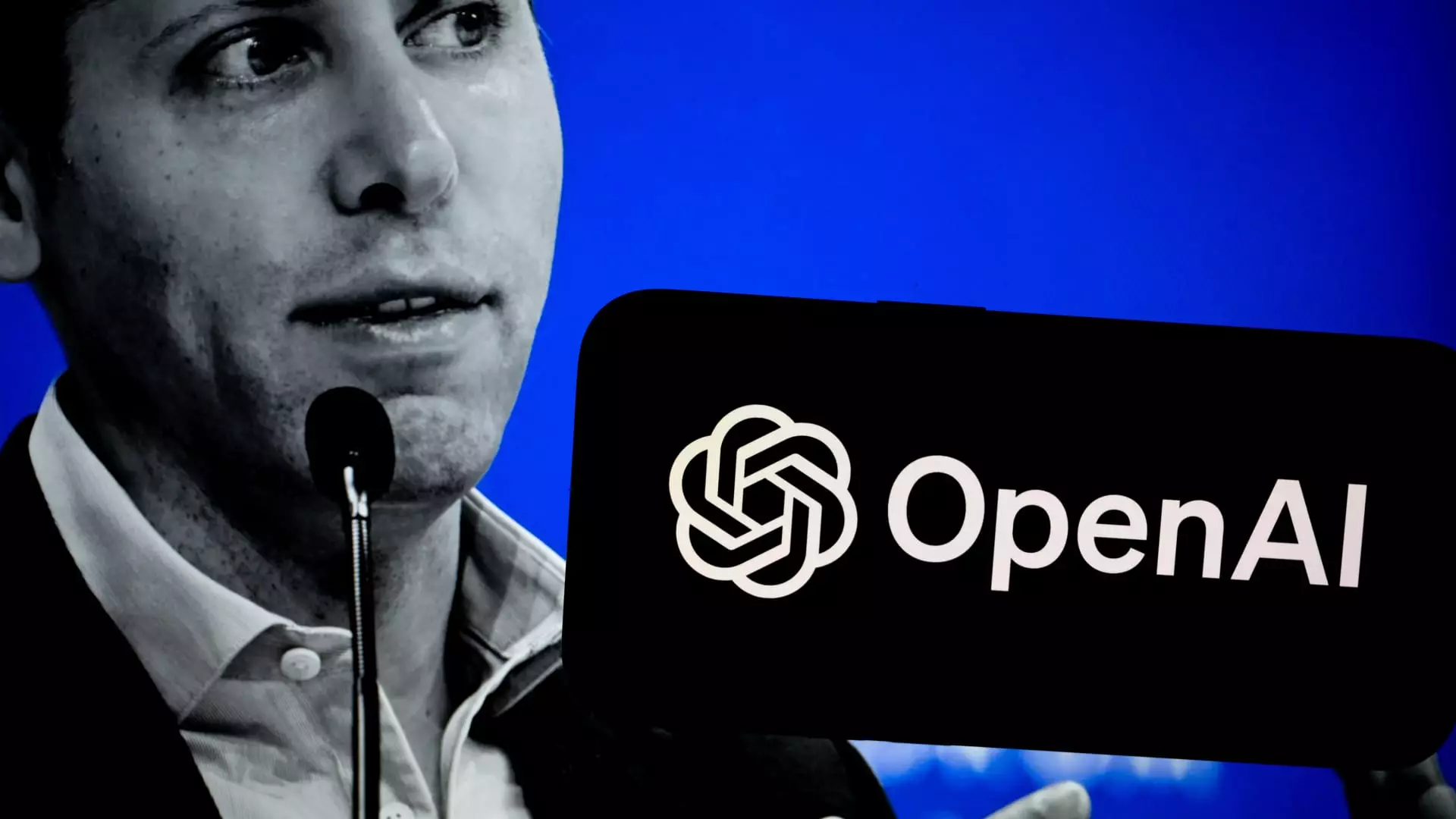OpenAI, a leader in the artificial intelligence industry, finds itself navigating tumultuous waters amidst significant executive departures and restructuring conversations. As the organization grapples with its high valuation—now reportedly over $150 billion—it’s pivotal to examine the implications of these changes on its future trajectory, especially in light of the internal and external pressures that it’s facing.
At a recent all-hands meeting, OpenAI’s CEO Sam Altman addressed rumors regarding his potential acquisition of a substantial equity stake in the company. Describing reports suggesting otherwise as “just not true,” Altman aimed to quell any unrest among investors and employees alike. The lack of equity ownership has raised eyebrows, especially given that Altman co-founded OpenAI nearly nine years ago and crucially drives its strategic direction. While critical to the organization’s past successes, this situation may signify a disconnect between leadership and the corporate structure, raising questions about long-term motivation and the strategic vision aligned with stakeholders.
Accompanying Altman at the meeting was the company’s finance chief, Sarah Friar, who reiterated that discussions surrounding equity compensation have taken place among the board. Bret Taylor, the OpenAI Chairman, confirmed this sentiment by stating that while they have considered the benefits of compensating Altman with equity, no concrete plans or figures have materialized as of yet. Such indecisiveness brings forth a dilemma—if even the leadership lacks clear financial incentives, how can the broader team feel engaged and valued in a rapidly evolving environment?
In an environment characterized by rapid expansion, OpenAI is also facing a notable exodus of executive talent. Just days after the board’s equity discussions, three key executives announced their departures. This left many questioning the internal dynamics at play. Chief Technology Officer Mira Murati’s decision to step away after six and a half years raises alarms about possible discontent among the ranks. Her memo indicated a desire for “time and space to do [her] own exploration,” which could imply a broader trend of executives seeking opportunities that align more closely with their ambitions amidst organizational restructuring.
The significance of these departures cannot be overstated. Within months of each other, prominent figures including co-founder Ilya Sutskever and other visible leaders have also opted to exit. The cumulative loss of seasoned executives can create a vacuum in leadership that may affect morale and output. Such instability may disrupt the typically progressive culture that innovation-driven organizations like OpenAI thrive on.
Following the announcement of these executive changes, Altman appeared to suggest that the media’s portrayal of the situation was skewed, and he insisted that the departures weren’t necessarily linked to the ongoing discussions about restructuring. He maintains that the executives stepping down are simply ready for “new chapters.” While it’s important to allow for personal growth and leadership shifts, skepticism abounds regarding whether these transitions could actually signify deeper issues within the company.
Organizational culture is critical to sustaining innovation and growth in fast-paced industries like AI. High-profile exits have the potential to create an environment of uncertainty, where remaining employees might feel insecure about OpenAI’s direction. Altman’s assurances about a smooth transition and commitment to a strong future are commendable, yet ultimately the sustainability of OpenAI hinges on its ability to retain key talent and fully engage its workforce.
The current context highlights a dual challenge for OpenAI: ensuring continued growth while maintaining stability within its workforce and leadership structure. The ongoing funding round led by Thrive Capital, aiming for a whopping $1 billion investment, indicates that OpenAI is on the brink of considerable opportunity. Engaging with new financial backing can bolster its ambitions, but how this translates to a cohesive internal strategy remains to be seen.
Moreover, OpenAI’s rapid expansion post-ChatGPT has led to a hypersensitivity toward operational risks. Employees and outside observers alike are concerned that such velocity without adequate restructuring and leadership support can lead to failures in governance, innovation, and safety standards. The transition towards a for-profit entity presents an opportunity for re-evaluation, but it also necessitates ensuring that OpenAI can adapt its culture and strategy to align with new business interests without sacrificing its foundational mission.
OpenAI’s evolving landscape, marked by leadership changes, equity discussions, and strategic transformations, is a microcosm of the challenges faced by rapidly growing tech firms. The path forward hinges not only on sound financial strategy but also on the cultivation of a resilient culture that values and retains its talent while effectively navigating the intricacies of its ambitious mission in artificial intelligence.


Leave a Reply
You must be logged in to post a comment.